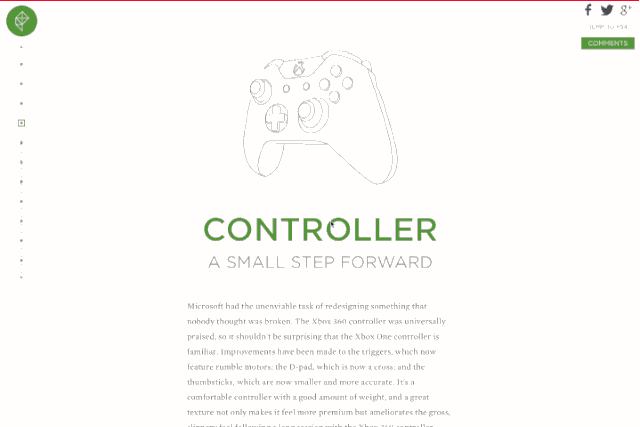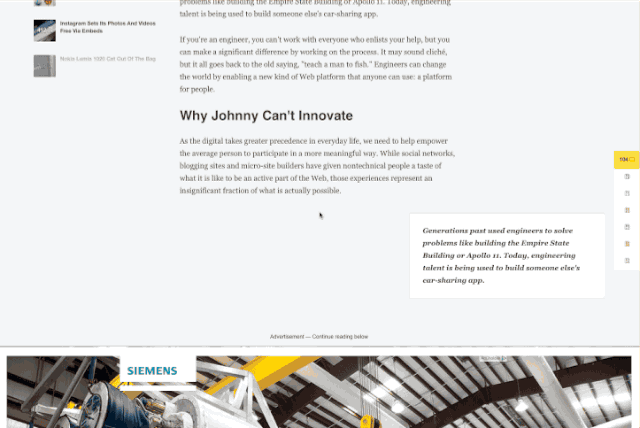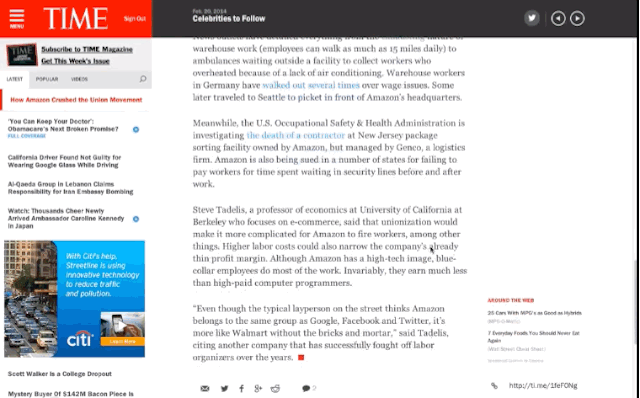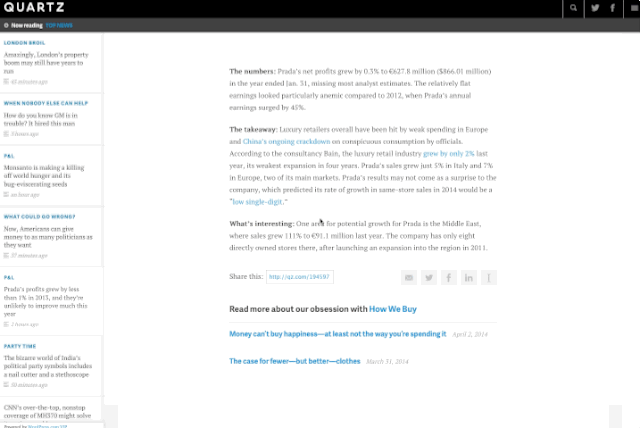Save 50% on a 3-month Digiday+ membership. Ends Dec 5.

While many advertisers have bought into the promise of scalable, programmatic buying, many publishers are hoping to draw them back with premium ad products. The New York Times, for example, has devoted an entire division to reinventing the banner via its Idea Lab. On a smaller scale, other publishers like Say Media, Vox Media, and Time Inc. are creating custom units that go far beyond the banner to give brands the sorts of premium ad experiences that are closer to magazines than banner ads.
With these premium ad experiences also come premium CPMs. No wonder, then, that publishers are chasing the money. Here’s a look at some recent examples.
Vox Media’s “Triton”

While many media companies have built one or two custom ad units, Vox has built several of them. “Triton,” above, features large imagery that slowly reveals itself as readers scroll past it.
“The Internet is the only medium where ads have to compete directly with editorial for users’ attention. We’re trying to give our advertisers their moment with the audience,” said Chad Mumm, Vox Media’s creative director.
The company is now working on scaling its ad efforts. On Wednesday, it announced Harmony, a new platform that lets it run premium ads across its seven media sites, which boast a combined 62 million uniques a month. Vox can run the ads rotationally, giving the effect of a mini ad exchange. While Vox also sells programmatically, advertising vp Joe Purzycki said that he hopes Harmony will let Vox do premium ads at greater scale than standard display ads.
Ad position: web_incontent_pos1
Say Media’s “Adaptive Ads”
Introduced last year with Siemens, Say Media’s Adaptive Ads are interstitial placements optimized for reading on desktop, tablets and mobile. Say Media says that the ads are heavy on presentation, making them a good fit for brands in fashion, tech and automotive. “This approach is more intuitive for readers and lets advertisers keep the authenticity of who they are as a brand,” said Aziz Hasan, creative director at Say Media.
While Say Media sells the adaptive ads as part of larger ad packages, it also sells them individually based on guaranteed view, not CPMs.
Time.com’s “Magnetic Ads”
Ad position: web_incontent_pos2
Launched with its redesign last month, Time.com’s new magnetic ads were developed in-house to create more expansive storytelling experiences for brands. Unlike standard display ads, Time’s magnetic ads can play off each other: Scrolling past an ad in the left rail, for example, can alter the one in the center.
Citi, the first to use the magnetic ads, was pretty conservative with its initial campaign, but the format allows advertisers to be more inventive. Brands could, for example, use the left rail ad as a remote control and let users change what content appears in the center column.
“The goal of any smart ad unit is to grab the readers’ attention and then engage them,” said Jed Hartman, Time Inc. group publisher. Hartman said that the “rich experiences” of Time’s magnetic ads let it charge brands CPMs that are closer to video rates than standard display ads.
Quartz’s “Engage Ads”
Quartz has not used a single IAB unit since its launch in 2012. Instead, the Atlantic Media-owned business site created “Engaged ads,” native ads that run as part of the editorial content stream rather than disrupt the reader’s experience. “Our philosophy is that commodity digital advertising has not been effective for brands,” said Marissa Hayes Aydlett, executive director of marketing at Quartz.
More in Media

What publishers are wishing for this holiday season: End AI scraping and determine AI-powered audience value
Publishers want a fair, structured, regulated AI environment and they also want to define what the next decade of audience metrics looks like.

Digiday+ Research Subscription Index 2025: Subscription strategies from Bloomberg, The New York Times, Vox and others
Digiday’s third annual Subscription Index examines and measures publishers’ subscription strategies to identify common approaches and key tactics among Bloomberg, The New York Times, Vox and others.

From lawsuits to lobbying: How publishers are fighting AI
We may be closing out 2025, but publishers aren’t retreating from the battle of AI search — some are escalating it, and they expect the fight to stretch deep into 2026.
Ad position: web_bfu


